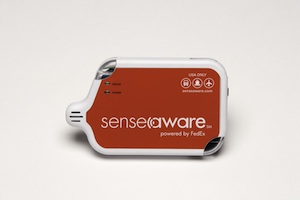This is Part 4 of a pre-print draft of Chapter 6 from Smart Things: Ubiquitous Computing User Experience Design, my upcoming book. (Part 1) (Part 2) The final book will be different and this is no substitute for it, but it's a taste of what the book is about.
Earlier chapters in this series: Chapter 3, Chapter 1Citations to references can be found here.
Chapter 6: Information shadows
Part 4: The Internet of Things
The Center's mission is to create an "Internet of Things" that will: merge the centuries old "network of atoms" (the production, distribution, sale, use & disposal of products) with the "network of bits" (the Internet).- Kevin Ashton, executive director of the MIT Auto-ID Center, 1999
The concept of information shadows is intertwined with the "The Internet of Things," a term coined by the staff of the MIT Auto-Id Center in 1999. The familiar Internet of bits is of course still made of things, but these things are primarily computational devices (routers, modems, etc.) whose purpose is to store, manipulate, and transmit data. These things generate the form of the Internet, not its content. People experience the Internet, however, through its content. This content, for now, exists for most people only through general-purpose digital devices such as laptops and mobile phones. [Footnote: Even specialized net-aware devices (Game consoles, ATMs, home security systems, etc.) are clearly presented as digital products whose connection to an electronic network does not come as a surprise.]
In 1999, MIT Auto-Id Center's vision was that non-electronic things should also have digital identities. The Center's main focused was automatic identification [Footnote: Leading to a number of visionary proposals for how such identification would work (Brock, 2001-1, 2001-2, etc.).], rather than the digital social life such identification creates for things. Information shadows, however, enable more symmetrical experiences than just identifying non-digital objects, as economically and socially powerful as that is. The Internet of Things has by now taken on a broader meaning. It describes the collection of all objects with information shadows, whether those objects' relationship to the Internet is asymmetrical (as in the case of identification and tracking) or symmetrical.

Figure 6-8. FedEx SenseAware (Courtesy FedEx)
The possibilities created by feedback between an object and its information shadow are immense. A shipped object can conceal its actual destination, only revealing the next step in its path to a shipper and dynamically adjusting its route if diverted. It can validate its authenticity and refuse to function if the person holding it is unauthorized, with the list stored in its information shadow. A FedEx's SenseAware smart tag (Figure 6-8), for example, reports not just the location of its package, but also the environmental conditions of its transfer. As it travels, it adds its location, temperature, pressure, humidity, and whether (and when) its box has been opened to its information shadow. In a more speculative scenario, a SenseAware-equipped box could theoretically reroute itself if storage conditions were likely to have caused its contents to spoil. [Footnote: FedEx does not currently offer this service. This scenario is speculative only.]
Despite its roots in shipping, an Internet of Things could use information shadows in a wide variety of ways. A motorcycle could have a strain gauge built into its chain, and store both the status of the chain, and the specifications for a replacement, in its information shadow. When the chain was stretched to the point where it needed replacement (an important part of motorcycle maintenance that can lead to very dangerous conditions if not performed), the motorcycle could log that state in its information shadow. This, in turn, could trigger an alert on the motorcycle owners' phone and on the motorcycle's dashboard. The repair shop could interrogate the motorcycle for the kind of chain last used and the chain performance characteristics indicated based on sensor data taken since the last replacement.
Tomorrow: Chapter 3, Part 5: Design with Information Shadows



